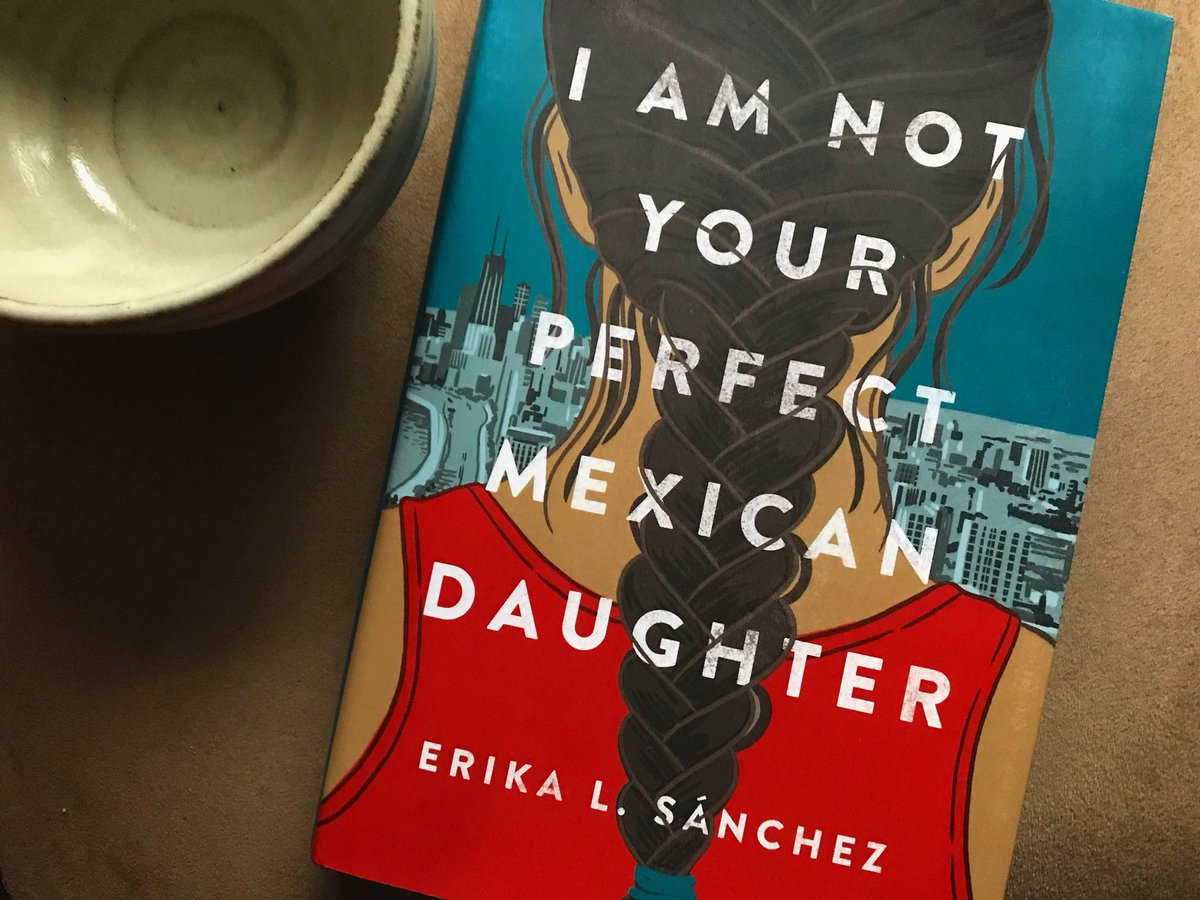Julia Reyes, a Mexican-American teenager living in inner city Chicago, is determined to uncover whether her dead older sister was keeping secrets from her family. Well, at least that’s how Erika L. Sánchez’s young adult (YA) novel, “I Am Not Your Perfect Mexican Daughter,” begins. Warning, spoilers below!
The novel is about Julia coping with the sudden death of her sister and struggling with an identity that completely rejects the notion of a “perfect Mexican daughter.” Sánchez wrote a story worthy of in-depth discussion, making it a great summer reading assignment for teens (and some adults, too).

One point students should discuss is the juxtaposition of how people perceive Julia and her sister Olga. Julia is well read, opinionated and fiercely outspoken, traits that get her into trouble sometimes. Her family (parents and extended) frequently tell her that she needs to be quiet in order to have an easier life and her classmates (even her best friend sometimes) think she is stuck-up, because she speaks so articulately and constantly voices her strong opinions.
Sánchez admits Julia was a tough protagonist to sell to literary agents. “I got rejected a lot by agents. Some of them didn’t like the voice,” she said in an NBC News interview. “My character is not for everybody, she’s a snarky brown girl, just as I was. A lot of agents didn’t understand that kind of person.”
Unlike Julia, Olga was soft-spoken, docile, close to their mom and got along with their extended family. Although Olga is dead, it seems like she still lives on throughout the book because people are always wondering why Julia can’t be more like Olga, which frustrates Julia.
The other characters tend to see Julia as the source of her own problems. If she wants a better life, she needs to shut up, they tell her. At one point, her mother, Amá, goes so far as to blame Olga’s death on Julia, because Amá had to talk to the principal about something Julia said to a teacher, leaving Olga to take the bus home from work. I’m not saying Olga’s death was her own fault, but Julia’s family and friends never seem to mention that Olga was texting when she was hit by a semi truck crossing the street to get on another bus.
Later in the book, Julia finds out that Olga was having an affair with a married doctor, something that she never tells her family. It’s interesting that Julia decides not to reveal the one piece of information that would prove her sister is not perfect to her parents. I think her love for her sister overshadows her need to bring her sister down from the pedestal where everyone else places her.
The larger implications of the comparisons between Julia and Olga are that some traits, such as being quiet and family-centered, are valued while outspokenness and constantly challenging the status quo are not. Students can talk about the cultural reasons behind why these traits belong to the “perfect Mexican daughter.”

In addition to the conflicting characterizations of Julia and Olga, Sánchez also does not shy away from more difficult issues such as immigration, sexual harassment and mental illness. This should not come as a surprise, because Sánchez has written countless articles about similar topics for Truthout, Aljazeera and other media outlets.
The topic of immigration hits close to home for Julia because her parents emigrated from Mexico before she and her sister were born and deportation is a constant fear in her community. Her father’s employer, a candy factory, was raided often by immigration officials when she was a little girl. Luckily, her father was never scheduled to work when those raids happened.
Sánchez includes a few of the characters’ horrifying experiences with coyotes, people who charge a fee to smuggle immigrants illegally across the U.S. border. Julia’s parents’ coyote robbed them and raped Amá, and the father of Julia’s best friend Lorena was abandoned and left to die in a dessert by his coyote.
“I Am Not Your Perfect Mexican Daughter” adds a face to the immigration conversation. Students can discuss what the American dream means to immigrants and if this story influences their views on immigration. They could also talk about how the way immigration is handled in the novel connects to current events.
There are also some particularly disturbing incidents of sexual harassment that stick out to me. Lorena’s step-father (a.k.a. her mom’s boyfriend) kisses her without consent even though he’s 10 years older than her. Another time, Julia is catcalled while walking home. It starts with this guy saying inappropriate comments about her body from his car and as she tries to ignore him, his friend riding with him calls her a bitch. They don’t leave her alone until an old man sees them and yells at them to stop.
Before the #MeToo movement, some would have viewed what happened to Julia and Lorena as isolated incidents, but now students will start to recognize that these incidents occur more frequently than they think. Classroom discussions could explore the distress sexual harassment causes and why it’s so important for other people to intervene when sexual harassment happens.
Mental illness plays a major role in Julia’s life, although she doesn’t acknowledge it as doing so. Her parents tell her she is dramatic, while others outside her family, such as an old friend of her sister’s, say that she is sensitive. No one thinks anything is actually wrong with her. Julia starts to internalize that sentiment, which is probably why she does not seek mental help even when her English teacher suggests she see a professional.
Julia and her family don’t realize that something is off until after she attempts suicide. However, her parents don’t completely understand Julia’s depression and anxiety diagnosis. When she finishes her outpatient treatment program, they send her to her grandmother’s house in Mexico “to relax.”This response is not a shocking one. considering that the Latino community is not exposed to enough mental health information.
Due to language, sexual references, drug and alcohol use, and violence, there might be some pushback against reading this book and discussing it in the high school classroom. Even if students don’t read it officially for class, “I Am Not Your Perfect Mexican Daughter” is great for those looking for a deep summer read.

















